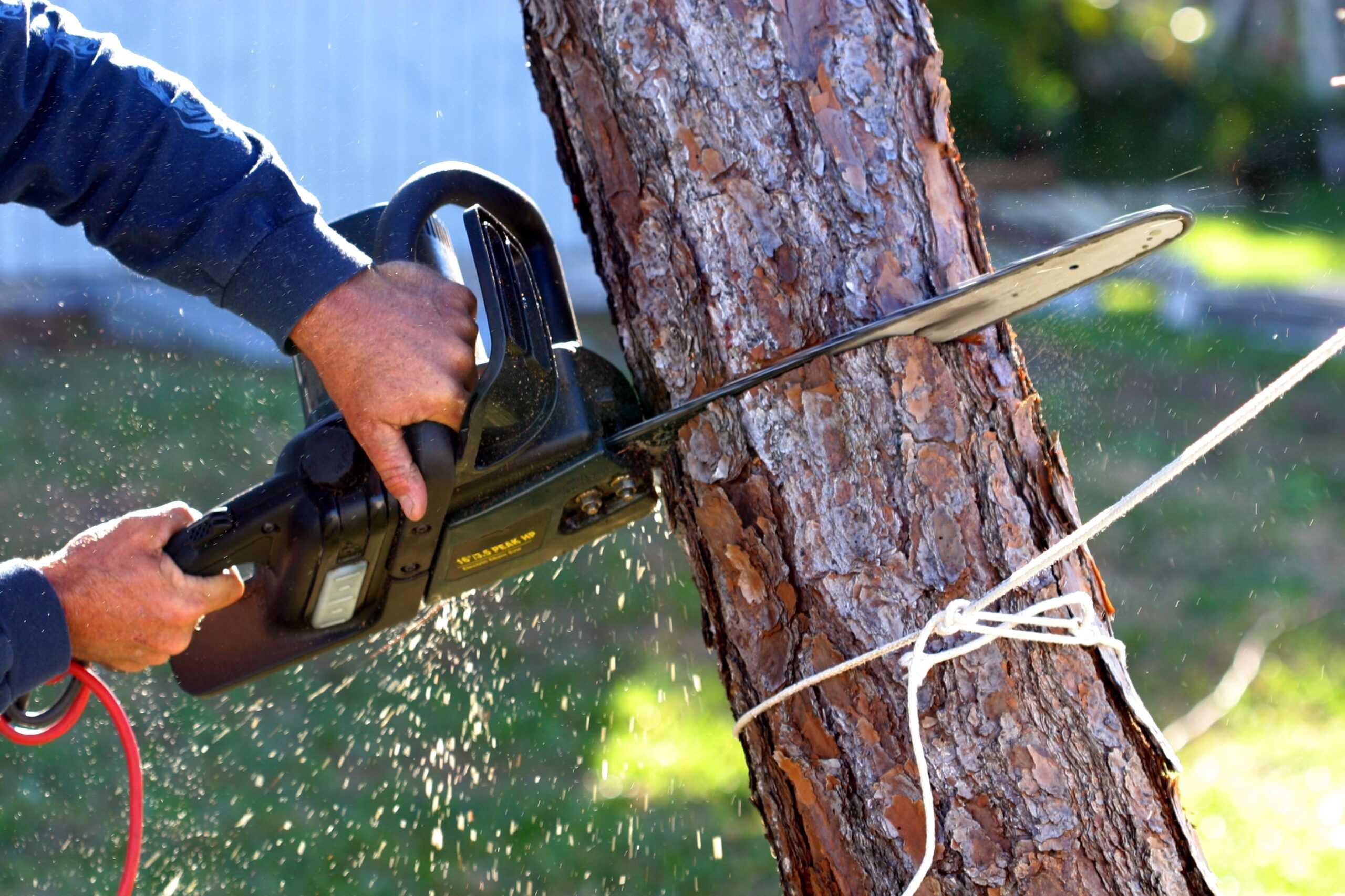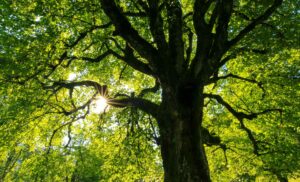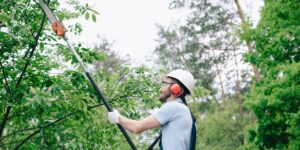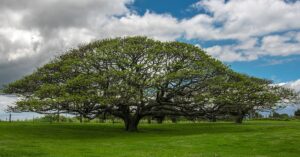Manatee County Tree Removal Regulations: A Comprehensive Guide
Are you a Manatee County property owner looking to remove trees from your property? Whether you’re planning a construction project, addressing safety concerns, or simply redesigning your landscape, understanding the local tree removal regulations is essential. Navigating these regulations can seem complex at first, but this comprehensive guide will walk you through everything you need to know about tree removal permits, protected species, penalties for violations, and the importance of these regulations for our community’s environmental health.
Understanding Manatee County’s Tree Protection Philosophy
Manatee County, located on Florida’s beautiful Gulf Coast, takes pride in its lush natural environment. The county’s tree canopy provides numerous benefits including improved air quality, reduced stormwater runoff, wildlife habitat, and enhanced property values. This is why the county has established comprehensive regulations to protect this valuable resource while still allowing for responsible development and property management.
The foundation of Manatee County’s tree regulations stems from the recognition that trees are not just aesthetic assets but also critical environmental infrastructure. The county views its tree canopy as an essential component of community wellbeing, helping to mitigate the urban heat island effect, reduce energy costs, and maintain the distinctive character that makes Manatee County a desirable place to live.
According to the Manatee County Land Development Code, the purpose of tree protection regulations is “to promote the public health, safety, and general welfare by establishing minimum standards for the protection, maintenance, and planting of trees.” These regulations apply to both residential and commercial properties throughout the county, though specific requirements may vary based on zoning and development status.
When you’re planning any project that might impact trees on your property, it’s important to understand that these regulations aren’t designed to prevent development or property improvements, but rather to ensure that such activities are conducted in a way that minimizes harm to the county’s natural resources.
When Do You Need a Tree Removal Permit in Manatee County?
One of the most common questions property owners have is whether they need a permit to remove trees on their land. The answer depends on several factors including the type, size, and location of the trees in question, as well as your property type.
Permit Requirements for Different Property Types
If you own a single-family residential property, you generally need a permit to remove any tree with a trunk diameter of 4 inches or greater measured at 4.5 feet above ground level (known as diameter at breast height or DBH). For commercial properties, multi-family residences, and properties under development, the requirements are typically more stringent, often requiring permits for trees of any size.
However, there are important exceptions to these general rules. For instance, you may remove trees without a permit under the following circumstances:
When the tree poses an imminent danger to people or property, such as during emergency situations like storms or when a certified arborist has documented that the tree is hazardous. Documentation should be maintained for verification purposes.
When removing certain invasive exotic species that are listed in the Manatee County Land Development Code Section 701.4.E. These non-native species can be removed without a permit as they often harm native ecosystems.
When the tree is located within 10 feet of an existing residential structure (not including accessory structures like sheds or detached garages) and potentially threatens the structural integrity of the building.
It’s worth noting that even when a permit isn’t required, you may still need to adhere to certain replacement standards or other conditions depending on the situation. When in doubt, it’s always best to contact the Manatee County Planning Department before removing any trees.

The Permit Application Process
If you determine that you need a permit to remove trees on your property, you’ll need to follow the county’s application process. This typically involves submitting a tree removal permit application to the Manatee County Planning Department, which can be done in person or through the county’s online portal at Manatee County Building and Development Services.
Your application will need to include:
A site plan showing the location, species, and size of trees proposed for removal Documentation of why removal is necessary A tree replacement plan (if applicable) The appropriate application fee
Processing times typically range from 5 to 15 business days depending on the complexity of your request and current department workload. For simple residential requests, you might receive approval within a week, while more complex cases involving multiple protected trees or commercial properties may take longer.
When reviewing your application, county officials will consider factors such as the health of the tree, its location and potential impact on surrounding properties, the presence of alternative solutions, and your proposed replacement plan. They may schedule a site visit to assess the situation firsthand.
Protected Tree Species in Manatee County
Manatee County places special emphasis on protecting certain native tree species that are particularly valuable to the local ecosystem. These protected species typically have higher thresholds for removal approval and may require more extensive replacement measures if removal is permitted.
Highly Protected Tree Species
The following table outlines some of the most highly protected tree species in Manatee County and their special considerations:
| Tree Species | Scientific Name | Special Protection Status | Minimum Size for Protection |
|---|---|---|---|
| Live Oak | Quercus virginiana | Grand Tree potential | 4″ DBH |
| Laurel Oak | Quercus laurifolia | Significant native species | 4″ DBH |
| Southern Magnolia | Magnolia grandiflora | Significant native species | 4″ DBH |
| Bald Cypress | Taxodium distichum | Wetland indicator species | Any size |
| Sabal Palm | Sabal palmetto | Florida State Tree | 6′ clear trunk |
| Longleaf Pine | Pinus palustris | Declining native species | 8″ DBH |
| Red Cedar | Juniperus virginiana | Significant native species | 4″ DBH |
These species are protected not only for their ecological value but also for their cultural significance and contribution to Manatee County’s distinctive character. The removal of these trees is generally only approved in cases where:
- The tree is dead, diseased, or hazardous as certified by a qualified arborist
- The tree location makes development of a permitted use impossible and no reasonable alternative exists
- The tree causes documented damage to existing structures that cannot be mitigated by other means
Grand Trees: Special Protection Status
Manatee County provides additional protection for what it designates as “Grand Trees.” These are exceptionally large, old, or historically significant trees that receive the highest level of protection under county regulations.
A Grand Tree is typically defined as a tree with a DBH of 24 inches or greater for most species, though this threshold may vary depending on the species. Live oaks, for example, are often classified as Grand Trees at smaller diameters due to their ecological significance and slow growth rate.
Removing a Grand Tree requires compelling justification and is rarely approved except in cases where the tree poses a significant safety hazard that cannot be mitigated through pruning or other measures. If you believe you have a Grand Tree on your property that needs removal, you’ll need to:
- Submit a specialized Grand Tree removal application
- Provide documentation from a certified arborist regarding the tree’s condition
- Demonstrate that all reasonable alternatives to removal have been exhausted
- Prepare for significant replacement requirements if approval is granted
The county may also require posting of public notice before approving the removal of Grand Trees, allowing community members to provide input on the decision.
Tree Replacement Requirements and Mitigation Options
When tree removal is approved in Manatee County, you’ll typically be required to replace the removed trees or provide other forms of mitigation. The specific requirements depend on the size, species, and number of trees removed, as well as your property type and zoning classification.

Standard Replacement Requirements
For most residential properties, the basic replacement requirement follows a diameter-based calculation. You’ll need to replace the removed tree with new trees that collectively equal or exceed the diameter of the tree that was removed. For example, if you remove a 16-inch diameter oak tree, you might be required to plant four 4-inch diameter trees as replacement.
The following table outlines typical replacement requirements based on the size of the removed tree:
| Size of Removed Tree (DBH)Minimum Replacement RequirementAlternative Fee in Lieu4″ – 11″1 tree (min. 2″ caliper) | $250 per tree | |
|---|---|---|
| 12″ – 18″ | 2 trees (min. 2″ caliper) | $500 total |
| 19″ – 24″ | 3 trees (min. 2″ caliper) | $750 total |
| 25″ – 36″ (Grand Tree) | 4 trees (min. 3″ caliper) | $1,500 total |
| >36″ (Grand Tree) | 6 trees (min. 3″ caliper) | $2,500 total |
Mitigation Alternatives
In some cases, particularly on smaller properties where planting the required replacement trees may not be feasible, Manatee County offers alternative mitigation options:
Fee in Lieu of Planting: You can pay a fee to the county’s Tree Fund, which is used for public tree planting and maintenance elsewhere in the community. The fee amount is typically based on the size and species of the removed tree, as shown in the table above.
Off-Site Planting: In some cases, you may be permitted to plant replacement trees on another property you own within Manatee County, or on public land if arranged with the appropriate authorities.
Conservation Easements: For larger properties, particularly those undergoing development, dedicating a portion of the property as a conservation easement with existing trees may offset some replacement requirements.
It’s worth noting that replacement trees must be Florida-friendly species appropriate for the planting location, and they must be maintained for a minimum of two years to ensure establishment. The county may require an inspection to verify compliance with replacement requirements before considering your permit fully satisfied.
Penalties for Unauthorized Tree Removal
Removing protected trees without the proper permits can result in significant penalties in Manatee County. The county takes these violations seriously as unauthorized removals permanently impact the community’s natural resources.
Fine Structure and Enforcement
If you remove a protected tree without a permit, you could face the following consequences:
- Stop Work Orders: If unauthorized tree removal is discovered as part of a development or construction project, the county can issue a stop work order halting all activity until the violation is resolved.
- Monetary Fines: Fines typically start at $500 per tree for first-time offenders but can increase significantly based on the size and species of the tree removed. For Grand Trees or repeated violations, fines can exceed $10,000 per tree.
- Replacement Requirements: In addition to fines, you’ll be required to replace the illegally removed trees, often at a higher ratio than would have been required with a permit. For example, while a permitted removal might require a 1:1 replacement, unauthorized removal might require a 3:1 or higher ratio.
- Property Liens: If fines and mitigation requirements are not addressed, the county may place a lien on your property.
- Criminal Charges: In extreme cases involving multiple trees or protected species, criminal charges may be filed.
The county uses various methods to enforce tree protection regulations, including responding to citizen complaints, conducting routine inspections of development sites, and reviewing aerial imagery to detect unauthorized clearing activities.
How to Avoid Penalties
The best way to avoid these penalties is straightforward: always check with the Manatee County Planning Department before removing any trees that might be protected. Even in situations where you believe an exemption applies, it’s advisable to document the condition of the tree and notify the county before proceeding with removal.
If you’re purchasing property where unauthorized tree removal may have occurred previously, it’s important to verify that there are no outstanding violations or liens related to tree removal. These obligations typically transfer with property ownership, so you could inherit responsibility for previous violations.
Special Considerations for Different Types of Properties
Tree removal regulations can vary significantly depending on the type of property you own and your development plans. Understanding these nuances can help you navigate the requirements more effectively.
Residential Properties
If you own a single-family home on a developed lot smaller than one acre, you generally have more flexibility regarding tree removal than other property types. Key considerations include:
- Trees within 10 feet of your primary residence may qualify for expedited removal permits if they potentially threaten the structure.
- Fruit trees and small ornamental trees under 4 inches DBH can typically be removed without permits.
- Corner lots and waterfront properties may have additional restrictions to preserve visibility at intersections or protect shoreline vegetation.
When planning landscape renovations, consider consulting with a landscape architect familiar with Manatee County regulations to design a plan that minimizes the need for protected tree removal while achieving your aesthetic goals.
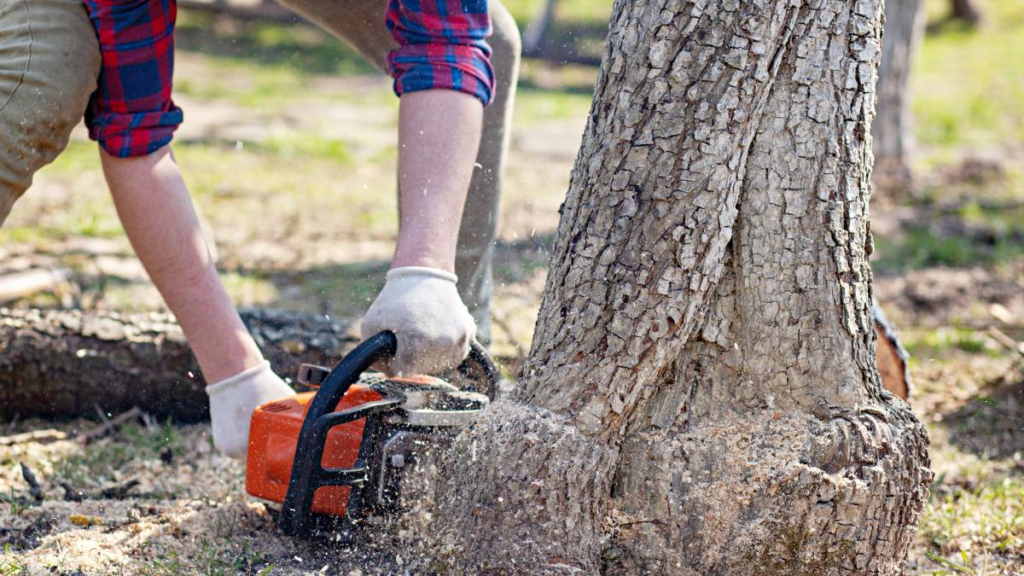
Commercial and Multi-Family Properties
Commercial properties, apartment complexes, and other multi-family developments face more stringent tree protection requirements. If you manage such a property, you should be aware that:
- Regular maintenance of existing landscaping typically doesn’t require permits, but any tree removal does, regardless of size.
- Parking lot trees and perimeter buffer trees specified in your original development approval cannot be removed without a modification to your site plan.
- Replacement requirements are typically higher than for residential properties.
- Annual inspection and maintenance of trees by a certified arborist is recommended to identify potential issues before they become hazardous, potentially qualifying for removal exemptions.
Agricultural Properties
Agricultural operations have specific exemptions under Manatee County regulations, but these exemptions are not unlimited. If you operate a farm or agricultural business, you should understand that:
- Bona fide agricultural operations may remove trees within actively farmed areas without permits.
- The agricultural exemption does not extend to natural areas of the property not actively used for crop production or livestock.
- Converting previously undeveloped land to agricultural use may require permits and mitigation for tree removal.
- Documentation of agricultural status with the Property Appraiser’s office is essential to qualify for these exemptions.
Properties Under Development
If you’re developing a previously undeveloped property or significantly redeveloping an existing site, you’ll face the most comprehensive tree protection requirements. The development process typically requires:
- A tree survey identifying all protected trees on the property
- A tree protection plan showing how trees to be preserved will be protected during construction
- Integration of significant trees into the development plan where possible
- Substantial mitigation for any protected trees removed
- Posting of performance bonds to ensure compliance with tree protection measures
Early consultation with the Planning Department during the concept phase of development can help identify potential issues related to tree protection and may allow for more creative solutions that preserve significant trees while accommodating development needs.
The Ecological and Economic Benefits of Tree Preservation
Understanding the reasoning behind tree protection regulations can help you appreciate their importance even when they might affect your immediate plans. Manatee County’s tree canopy provides numerous benefits that impact both your property and the broader community.
Environmental Benefits
Trees in Manatee County provide critical environmental services including:
- Climate Regulation: Trees absorb carbon dioxide and release oxygen, helping to mitigate climate change impacts. A mature tree can absorb approximately 48 pounds of carbon dioxide per year.
- Water Management: Trees reduce stormwater runoff by catching rainfall in their canopies and absorbing water through their root systems. This reduces flooding and improves water quality by filtering pollutants.
- Wildlife Habitat: Native trees provide essential habitat for local wildlife, including birds, squirrels, and pollinators that maintain ecosystem health.
- Air Quality Improvement: Trees filter particulate matter from the air and absorb pollutants like ozone, sulfur dioxide, and nitrogen oxides, improving local air quality.
In Florida’s warm climate, trees also provide essential shade that reduces the urban heat island effect, making outdoor spaces more comfortable and reducing energy costs for cooling.
Economic Benefits
Beyond environmental considerations, trees provide significant economic benefits:
- Property Value Enhancement: Mature trees can increase property values by 7-19% according to multiple real estate studies. In Manatee County’s competitive real estate market, well-maintained trees can make your property stand out.
- Energy Savings: Strategically placed trees can reduce air conditioning costs by 15-30% by shading buildings and reducing ambient temperatures.
- Tourism Impact: Manatee County’s tree canopy contributes to its aesthetic appeal, which supports tourism and associated economic activity.
- Infrastructure Savings: The stormwater management benefits of trees reduce the need for engineered drainage solutions, saving municipal infrastructure costs.
By preserving existing trees on your property, you’re not only complying with regulations but also investing in your property’s long-term value and the community’s economic health.
Working with Arborists and Tree Service Professionals
Navigating tree removal regulations often requires professional assistance. Working with qualified professionals can help ensure compliance while also preserving valuable trees when possible.
Selecting a Qualified Arborist
When hiring an arborist to assess your trees or provide documentation for permit applications, look for these qualifications:
- ISA Certification: The International Society of Arboriculture certification indicates the professional has passed examinations and maintains continuing education in proper tree care.
- Liability Insurance and Workers’ Compensation: Ensure any professional working on your property has appropriate insurance coverage.
- Local Experience: Arborists familiar with Manatee County regulations and native tree species will be more effective in helping you navigate compliance requirements.
- References: Ask for and check references from previous clients, particularly those who required similar services.
An experienced arborist can not only help with permit applications but may also identify alternatives to removal such as pruning, cabling, or other tree preservation techniques that address your concerns while maintaining valuable tree canopy.

Questions to Ask Tree Service Companies
When hiring a tree service company to perform removals, ask these important questions:
- “Do you obtain all necessary permits, or is that my responsibility?” Reputable companies will typically handle the permitting process for you, but this should be clarified in advance.
- “How will you protect my property and surrounding trees during removal?” Proper techniques minimize damage to lawns, structures, and remaining vegetation.
- “What is your plan for debris disposal?” Some companies include complete cleanup and removal in their price, while others may charge extra or leave chipped material on site.
- “Can you provide documentation of the removal for my records?” This is important for verifying compliance with permit conditions.
Remember that the lowest bid is not always the best value. Professional tree services with proper insurance, equipment, and knowledge of regulations may charge more but provide superior service and help you avoid costly violations.
Resources for Manatee County Property Owners
Navigating tree regulations can be complex, but Manatee County offers numerous resources to help property owners understand and comply with the requirements.
County Offices and Services
The primary resources for tree-related questions include:
- Manatee County Planning Department: The main authority for tree protection regulations, permit applications, and enforcement. You can reach them at (941) 748-4501 ext. 6878 or visit their offices at the Manatee County Administration Building.
- Manatee County Extension Office: Offers educational programs on Florida-friendly landscaping and tree care. They can provide guidance on selecting appropriate replacement trees and maintaining your landscape in compliance with regulations.
- Code Enforcement Department: Responds to complaints and questions about potential violations. If you’re concerned about unauthorized tree removal on neighboring properties, this is the appropriate contact.
The county’s official website at www.mymanatee.org provides access to forms, regulations, and contact information for these departments.
Community Programs
Manatee County offers several programs that may assist property owners with tree-related concerns:
- Tree Planting Programs: The county occasionally offers free or subsidized trees to residents to increase canopy coverage.
- Florida-Friendly Landscaping™ Workshops: These educational sessions provide guidance on selecting and maintaining appropriate tree species for your property.
- Heritage Tree Program: Allows property owners to register historically or ecologically significant trees for special recognition and protection.
- Adopt-A-Tree Programs: Community initiatives that provide trees for planting in public spaces or qualifying private properties.
Participating in these programs can enhance your property while contributing to community-wide environmental goals.
Conclusion
Navigating Manatee County’s tree removal regulations may seem daunting at first, but understanding the requirements is essential for responsible property management. By familiarizing yourself with these regulations, you can avoid costly penalties while contributing to the preservation of the county’s valuable tree canopy.
Remember that these regulations exist not to prevent you from improving your property, but to ensure that Manatee County’s environmental assets are preserved for future generations. The mature trees that define our community took decades to grow, and their benefits cannot be quickly replaced once lost.
Whether you’re a homeowner, business owner, or developer, taking the time to understand tree protection requirements and incorporating them into your planning process will lead to better outcomes for both your property and the broader community. When in doubt, reach out to the Manatee County Planning Department or consult with a certified arborist familiar with local regulations.
By working together to protect and enhance our urban forest, we ensure that Manatee County remains a beautiful, healthy, and resilient place to live for generations to come.
